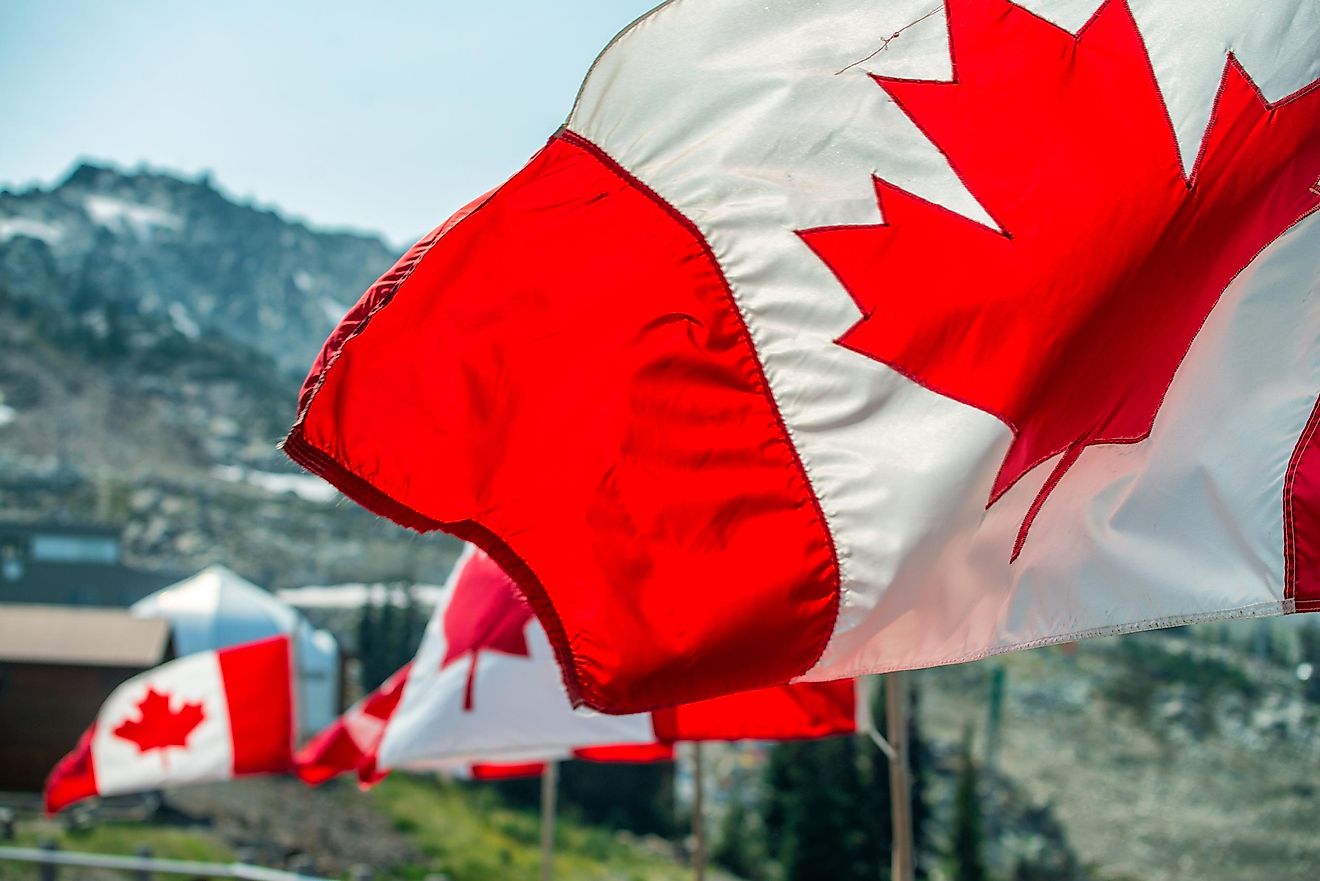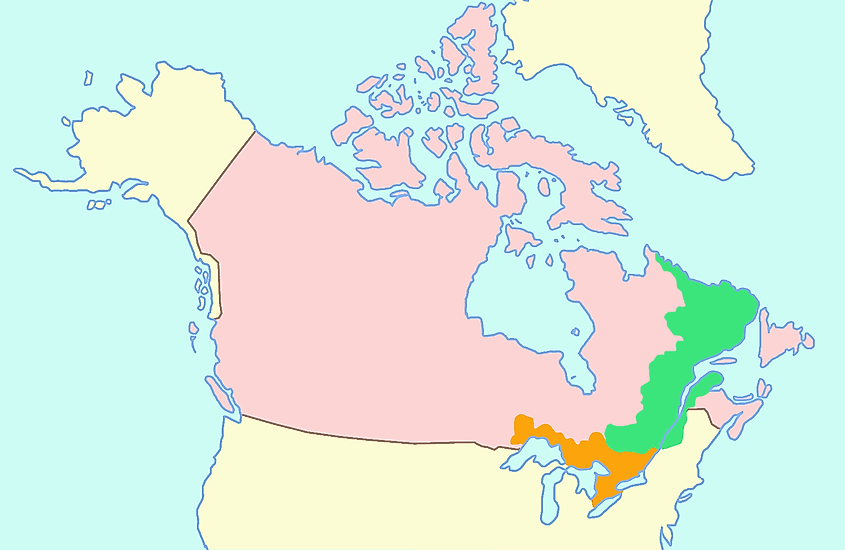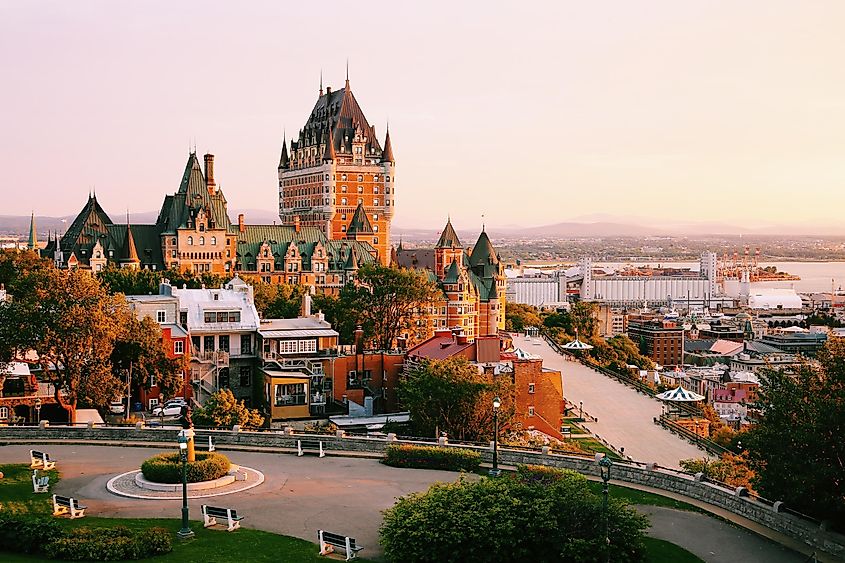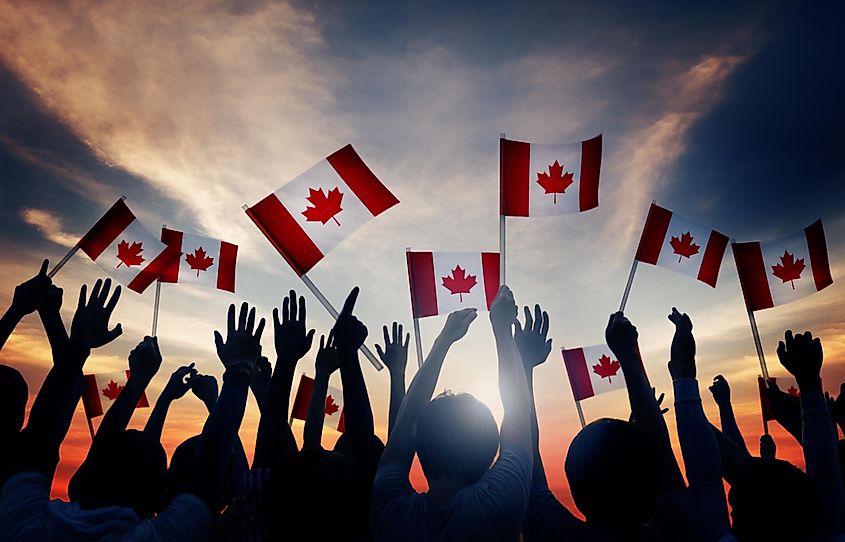The History Of Upper And Lower Canada

- The British Constitutional Act of 1791 officially divided Quebec into the primarily French-speaking Province of Lower Canada, and the primarily English-speaking Province of Upper Canada.
- Upper Canada was located upriver, closest to the source of the St. Lawrence river. Lower Canada was downriver closest to the mouth.
- After the rebellions in 1837-1838, the Act of Union was passed, uniting Upper and Lower Canada into the single Province of Canada.
Upper and Lower Canada were formed by the Constitutional Act of 1791 in response to the wave of United Empire Loyalists moving north from the United States into the French-speaking province of Quebec following the American Revolution (1765-1783). The result was the division of the old Province of Quebec into two colonies, Lower Canada to the east and Upper Canada to the West, each with their provincial legislatures. While Lower Canada retained the seigneurial system, language, and religious institutions of Quebec, Upper Canada developed on a model of British society.
New Settlers Arrive
In the wake of the American Revolution, United Empire Loyalists fled northwards to the Province of Quebec, followed by other English-speaking settlers. By 1790 the influx of new settlers numbered about 10,000. The territories they settled were already occupied by Indigenous peoples, including the Wendat, Tionontatehronnon, and Algonquin. The Loyalists, guided by Sir Frederick Haldimand, settled primarily along the St. Lawrence River in the area of Kingston, along the shores of Lake Ontario by the Bay of Quinte, and around the Niagara Peninsula. While Quebec had been established as a British colony with the Treaty of Paris (1763) and the Royal Proclamation of 1763, the majority of the population remained French-speaking. The English settlers, however, brought with them their own political and religious ideals, and tensions soon arose between the two groups. One key issue was that of land ownership. The Province of Quebec had established a seigneurial system that awarded parcels of land to nobles and religious communities, who then allotted pieces of the land to tenants in return for farming the land. Used to the freedoms they had held in the Thirteen Colonies, the new settlers wanted instead to own their lands in their own right. Similarly, they pushed for representative government, a British system of parliament, and British civil law. Religion was another point of tension. While the Roman Catholic Church was the established Church in Quebec, the new settlers looked to establish their Protestant Church.
In the years prior to the division of Quebec into the Canadas, Britain had hopes that floods of English settlers would anglicize Quebec. Prior to the Loyalist wave, the floods did not materialize. The Quebec Act of 1774 had restored the Catholic Church in Quebec, and the old French civil law, reversing the Royal Proclamation of 1763. The Canadiens were not ready to give up their recently restored privileges.
A New Province
The solution arrived at was the division of Quebec. The British Constitutional Act of 1791 officially divided Quebec into the primarily French-speaking Province of Lower Canada, and the primarily English-speaking Province of Upper Canada. Each province established its own government, with an appointed lieutenant-governor, executive council, legislative council, and elected representative assembly. While Lower Canada retained the seigneurial system, language, and religious institutions of Quebec, John Graves Simcoe, the first lieutenant-governor of Upper Canada, was determined that the new province would be a model of British society.
Defining “Upper” and “Lower”

The territory of Lower Canada extended west from the Ottawa River to the Great Lakes, south of Rupert's Land. Lower Canada extended east from the Ottawa River to the mouth of the St. Lawrence River, including what is now Labrador.
The terms “upper” and “lower” refer to the relative location of each province along the St. Lawrence River, which hints at the importance of rivers as highways for travel in the period. Upper Canada was located nearest the source of the St. Lawrence, “upriver”. In contrast, Lower Canada was closest to the mouth of the St. Lawrence, “downriver” (traveling with the current).
Upper Canada

With the establishment of Upper Canada, the seigneurial system of Quebec was abolished in favor of British freehold land tenure. Established as the official Church of the province, the Anglican Church received preferential treatment, for instance being granted large tracts of land as clergy reserves, "for the support and maintenance of a Protestant Clergy.”
Simcoe established British civil law and trial by jury, established the provincial capital at York (Toronto), and left a legacy of road building and town planning. Promises of free land drew more immigrants to the province. By 1811, the population of new settlers was almost 90,000.
In the early nineteenth-century, control of the province fell to the “Family Compact,” a small Conservative group, loyal to the British Crown. They were chosen from the friends of the lieutenant-governor and appointed to prominent roles within the government. The Family Compact was known for its corruption, granting government positions in return for favors of financial or political support, and preferential treatment of friends and supporters. But they were also “progressive industrialists,” promoting building programs and public works. But their aggressive hold on power, confined to a select elite few, fed political tension.
The War of 1812 was a defining moment for Upper Canada, which generated patriotic myths and heroic figures such as Laura Secord, Sir Isaac Brock, and Tecumseh. The war also strengthened ties with Britain, and immigrants flowed from Britain into Upper Canada in place of the American immigrants whom the war had halted.
As Upper Canada grew, it struggled economically, and by the 1820s had fallen into chronic debt. The province also lacked in infrastructures such as schools, hospitals, and local government. The government’s failings and corruption all contributed to the 1837-1838 rebellion. Early attempts to push through political reform, led by those such as Robert Baldwin, were moderate and unsuccessful. William Lyon Mackenzie took charge of the reformers in 1837 and left them into armed revolt against the government. The rebellion was defeated, but reform would follow.
Lower Canada
The Act of 1791 did not put an end to tensions in what was now, Lower Canada. While the majority of the population remained French-speaking, the British imposed English as the official language. The House of Assembly was divided between the English-speaking Tory Party, and the French-speaking Canadian Party, the House majority. Similarly, two political papers, The Quebec Mercury and Le Canadien voiced the interests of the English merchants and the Canadiens, respectively. Gradually, English began to take over as the language of business; by 1831, 45% of Quebec City’s population was English-speaking, and by 1842 they made up 61% of Montreal’s population.
Lower Canada appeared to thrive as the population boomed, growing from 110,000 in 1784 to 330,000 in 1812. Fur trade and commercial agriculture continued to dominate the economy. The timber trade grew rapidly after 1806 as demand rose, in part to meet the needs for shipbuilding. By 1832, however, the economy was in crisis. The declining price of furs and wheat resulted in a sharp decline in production, and many farmers were reduced to subsistence farming. The Province fell into chronic deficit importing wheat from Upper Canada. By the early nineteenth century, overpopulation had led to land scarcity and an increasing rural population, fueled in part by British immigrants, which contributed to class struggle.
These events and conflicts helped to fan the growing nationalism sentiments which came to a head in the Patriot insurrection of 1837-1838. The subsidy crisis, attributed to the “château clique”, the problem of customs duties between Upper and Lower Canada, and rising ethnic tensions all added fuel to the fire. Tensions boiled over in 1837 and rebellion broke out, “Patriots” taking up arms against the English army. Poor organization proved fatal to the rebellion, and the English response was swift and decisive. In response to the rebellion, Sir John Colborne appointed a special council to govern Lower Canada in place of the House Assembly until 1841.
The Act of Union

In 1838, Lord Durham, sent to report on the rebellions in Upper and Lower Canada, condemned the “political cliques”, the Family Compact and château clique”. He advocated for the establishment of responsible government and the amalgamation of Canadas into a single Union, as well as the assimilation of the French Canadiens. In 1841, the Act of Union officially united the two Canadas into the single Province of Canada.











